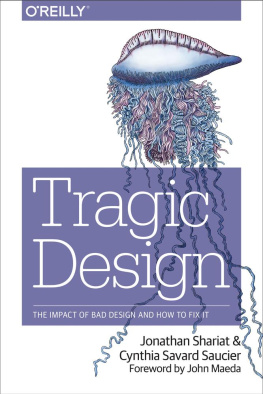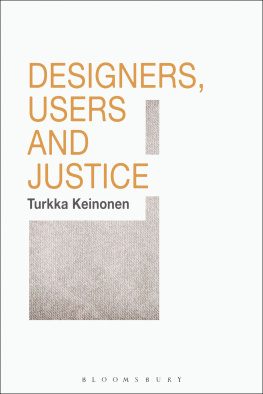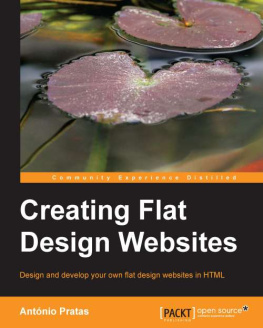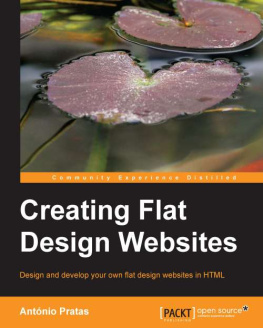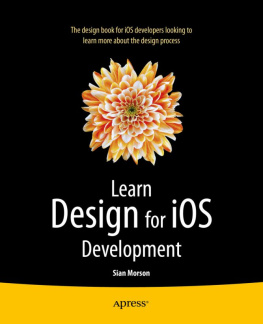Tragic Design: The Impact of Bad Product Design and How to Fix It
Jonathan Shariat
Cynthia Savard Saucier
Beijing Boston Farnham Sebastopol Tokyo
Special Upgrade Offer
If you purchased this ebook directly from oreilly.com, you have the following benefits:
DRM-free ebooksuse your ebooks across devices without restrictions or limitations
Multiple formatsuse on your laptop, tablet, or phone
Lifetime access, with free updates
Dropbox syncingyour files, anywhere
If you purchased this ebook from another retailer, you can upgrade your ebook to take advantage of all these benefits for just $4.99. to access your ebook upgrade.
Please note that upgrade offers are not available from sample content.
Foreword
Much of what Shariat and Savard Saucier write in this book, I might not have fully understood at all if Id never left the academy. Leaving wonderful places like MIT and RISD to join the world of industry isnt what good, pure thought leaders normally do, but all of my interactions with the new kinds of designers emerging in the technology industry made me think my thoughts werent really good enough anymore. So Ive been busy filling up my brain with the many new experiences that Ive gained by working in Silicon Valley at a thankfully late stage in my career. I say this with gratitude because I would have hated to have lived my entire life in the untouchable Ivory Tower without knowing what I do today. What have I learned about the future in Silicon Valley working in venture capital and advising technology companies? That the impact of Moores Lawthe doubling of computing power every 18 monthsis still making its way to people around the world. But the mitigating factor for technologys real impact in peoples lives isnt a technical one of speed, scale, or power. It isnt a matter measured in gigahertz, terabytes, or nanopixelsit is instead the pursuit of satisfying human needs for comprehensibility, ease of use, and emotional fit in our digital experiences today. It is a matter of purposefully designing superior solutions with technology that can empower and support humans.
Where are the designers for these new directions to be found? I find that a lot of them are in the startup communityspecifically, in companies whose CEOs and cofounders lead their ventures with a designers penchant for disrupting the status quo while centering their businesses objectives around what people want and need, rather than solely what new technologies can make possible. They are people like designers Brian Chesky and Joe Gebbia, who reframed the hospitality industry ( https://www.airbnb.com ) as a distributed network of bedrooms in peoples own houses to rent like hotel rooms. Or the nondesigner CEOs of public companies like John Donahoe, who formerly led eBay Inc. to adopt design thinking at the executive level across his companies. Or people like Marissa Vosper and Lauren Schwab, cofounders of tiny New Yorkbased apparel startup Negative Underwear ( https://negativeunderwear.com ), where technical fabrics are used to achieve fit and aesthetic needs that male lingerie designers have long overlooked. If you would like to learn more about this phenomenon, just look at the Design in Tech Reports ( http://DesignIn.Tech ) from the past three years; youll see that the impact of design in the technology industry is truly growing.
But with great impact comes great failures too. The many tragedies described in this book are evident throughout the technology industry, and to see them summarized in the way that Shariat and Savard Saucier present them is truly disheartening. And unfortunately, because of the way that the design profession is taught in the academy today, driven primarily by aesthetics and in the absence of testing or other data gathering, well likely see even more tragedies introduced through our apps, screens, and assorted IoT devices. For that reason, this book appears at an opportune time to encourage designers of all skill levels to break their honed Bauhausian biases, abandon their fine-tuned taste-o-meters, and bridge a path to the kind of vital, tragedy-preventing design that Shariat and Savard Saucier propose. I feel lucky that I get to put many of these principles into practice at Automattic ( https://automattic.com ).
What does design have to do with inclusion? I think that will become fully evident as you read through this book. Digital technology used to be available only to computer nerdsbut now, because of smartphones, digital technology is accessible to everyone. So it now needs to be considered from an inclusive viewpoint, encompassing the full variety of human beings that live on this planet, and not just highly skilled computer types. This revolution is just beginning, and its exciting to have Shariat and Savard Sauciers book to ground the growing movement of achieving truly inclusive design in the digital era.
John Maeda is Global Head of Computational Design and Inclusion at Automattic Inc. He is a Strategic Advisor to venture capital firm Kleiner Perkins Caufield & Byers, has led research teams at the MIT Media Lab, and was the 16th president of the Rhode Island School of Design. His work is represented in the permanent collection of the Museum of Modern Art.
Preface
B AD DESIGN DECISIONS CAN HARM . However, the designers making these decisions arent always aware of the responsibilities that come with their profession.
In medical school, the first fundamental principle that students are taught is Primum non nocere , or in plain English, First, do no harm. This immediately reinforces the concept that physicians have a lot of power over a persons life. In contrast, the first thing we were taught in design school was how to draw well in 3D perspective. Our teachers were obsessed with timeless and beautiful designs. We would strive for polished design and were greatly concerned by aesthetic qualities. Accordingly, we were rewarded for following trends and using appealing color palettes. Very rarely were we reminded that we have responsibilities and that what we design has a real impact on peoples lives.
If we were lucky, we had a single three-hour-long class on user experience...and the teacher probably called this a HumanComputer Interaction class. For example, in four years at university, neither Cynthia nor Jonathan was required to observe a single user interacting with a product they had designed!
After school, new designers carefully select the best projects theyve realized and put them into a portfolio. The rest, the bad and potentially dangerous projects, are dumped in an archive folder with the hope that no one will ever find it. If youre like us, you are so ashamed by some of these solutions that you might even rename this folder to something completely unrelated, to make sure that no one ever sees it, even by mistake. Fortunately, this bad design work is forgotten and forgiven! Not a single user will ever have to deal with the consequences of the questionable design decisions that we made as students.
But by focusing on the beauty scale, and allowing for any mistakes to blissfully disappear into an archive folder, our teachers and mentors neglect to address whats worse than getting a C in a class. What actually happens with failing projects in the real world? What can we learn from our mistakes, while the consequences of our inexperience are still trivial? We should be taught that, as designers, we have a lot of power to influence the way users interact with our products. And, to quote Spider-Mans uncle:

